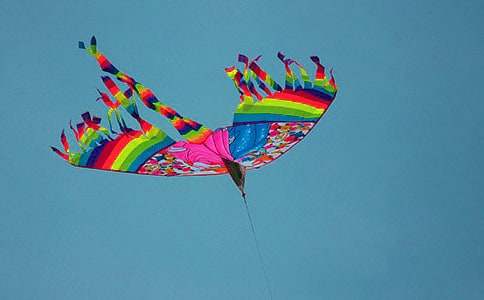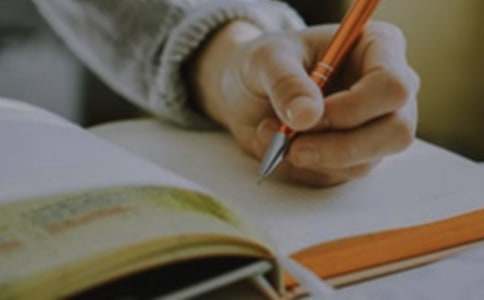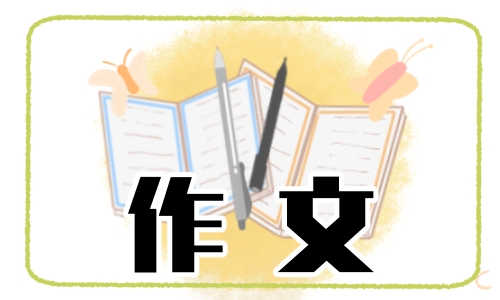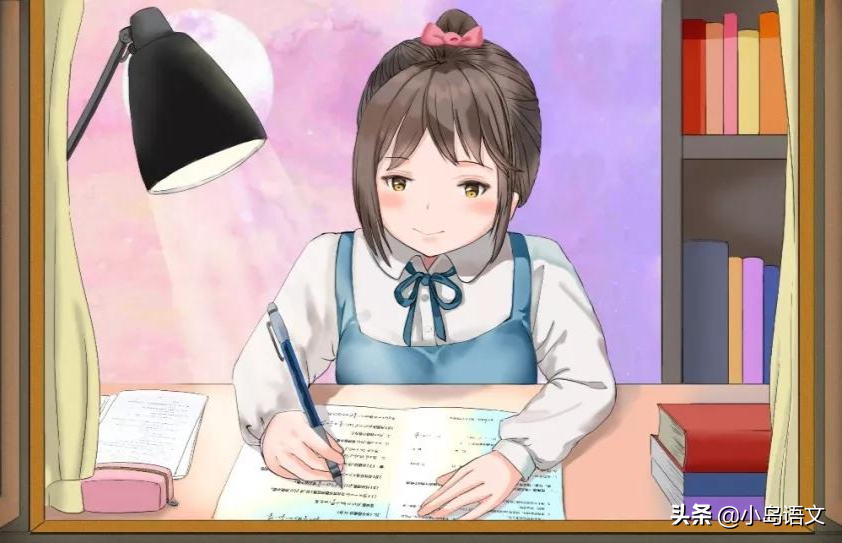关于人教版六年级上册英语全册知识点整理【三篇】
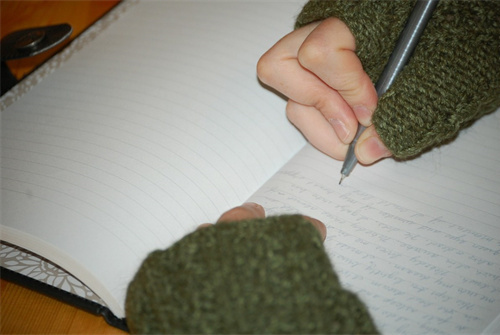
人教版六年级上册英语全册知识点整理1
坚持词汇积累,打好英语基础。小升初并没有固定的词汇量,但由于其出题方向趋向中考方向,小升初英语考试中涉及的应掌握词汇至少为中考大纲所要求的1600词,而要求看懂的词汇量则更大。词汇乃是英语学习的根基,没有大量词汇做基础,小升初英语考试很难取得高分。
全面学习语法,把握英语架构。小升初考试当中,语法为重点考查部分,单纯考查语法的单项选择题分值在15-30分左右,同时,在完形填空题,主观题当中也会涉及到对语法知识的考查。六年级的英语学习不但要进行系统的语法学习,还应掌握语法题的应试解题技巧。
应试技巧训练,掌握解题要点。小升初英语考试由于组织及形式的限制,对于学员短时间内的答题提出更高的要求,如何在混乱紧张的小升初英语考试中取得高分,对 于学员的解题技巧提出更高的要求。在六年级的学习中,需要通过对小升初真题及模拟题的专项训练,掌握小升初英语考试解题技巧。
人教版六年级上册英语全册知识点整理2
Unit1 How can I get there? 我怎样到达这里?
■重点单词:
where哪里 how 怎样 can能够 near近的 ask 问 tell 告诉 far远的 science科学 hospital 医院 museum 博物馆 postoffice 邮局 library图书馆 bookstore 书店
usually通常 sometimes有时候 often 经常 know知道 near旁边 next to旁边(比near更近) crossing 十字路口 turn left 向左转 turn right 向右转 go straight直走 in front of在…的前面 behind在...的后面
■重点句子:
1. How do you go to school? 你是怎样去上学的?
2.where is the restaurant? 餐馆在哪里?
3. Usually I go to school on foot. 我通常走路去上学。
4. Sometimes I go by bike. 有时候我骑自行车去。、
5. 问路之前,出于礼貌,我们要说“Excuse me”与后面的句子要用标点符号隔开。
6. Look at the traffic lights, remember the trafficrules. 看着交通灯,记住交通规则。
7. Stop at a red light. Wait at a yellow light. Go at agreen light. 红灯停。黄灯等一等。绿灯行。
8. Red means stop, yellow means wait, green means go. 红色的意思是停止,黄色的意思是等待,绿色的意思是通行。
9. How can I get to the park? 我该怎样到达公园呢?
10. You can go by the No. 15 bus. 你可以坐15路公交车去。
■重点知识:
1. 坐某种交通工具用by,例如:by bike, by train。而走路用 “on” 例如on foot.
2. 国家名字,地方名字第一个字母要大些:例如:Canada加拿大, China中国, America美国, England英国, Australia澳大利亚
3. 频度副词是表示做的次数多少的词语。从多到少依次排列为:always总是,usually通常,often经常,sometimes有时候,never从不。频度副词可以放在句首,也可以放在人称后面。例如:Usually I go to school by bus. = I usually go to school bybus.
4. near近的,far远的。这两个词是一对反义词。注意:not near= far, not far = near.
5. 时间前面用at. 例如:在三点钟:at 3 o’ clock.
6. 交通灯traffic lights,交通规则:traffic rules。这大部分的国家都是靠右行驶的:drivers drive on the right side of the road. 记住England and Australia,drivers drive on the left side ofthe road.英国和澳大利亚,司机是靠左行驶的。
7. on foot= walk, 都是走路的意思,但是用法不同,on foot用在句子末尾,而walk用法与go相同,可以代替go的位置。 例如:走路回家:walk home 走路去上学:walk to school 走路去上班 walk to work 走路去医院walk to the hospital
Unit2 Ways to go to school 上学的方法
■重点单词:
by bike骑自行车 by bus坐公车 by train坐火车 by plane坐飞机 byship坐轮船 by subway坐地铁
by taxi 乘出租车 on foot= walk 走路
Excuse me打扰一下 please请 buy买 want to想要 a pair of一双 get on上车 get off下车 turn left左转 turn right右转 am上午 pm下午 now现在 look for寻找 top停止 wait等待 get to到达 driver司机 must必须
■重点句子:
1. Let’s go to the nature park,让我们一起去公园吧!
2. How do we get there?我们怎样到达这里?By bus乘公交。
3. The park is over there,公园在那里。
4. Let’s go .我们一起出发吧!
5. Slow down and stop at a yellow light.黄灯等一等。
6. Stop and wait at a red light.红灯停。
7. Go at a green light.绿灯行。
■重点知识:
1. Is there 开头的问句怎么回答呢?例如:Is there a cinema near here? 只要把前两个词语的顺序换一下就可以了,肯定回答是:Yes, there is. 否定:No, there isn’t.
2. buy 和 by的区别,这两个词语发音相同,但是意思完全不同,by:乘,坐 buy:买
3. 地点名词前面一定要有the,例如:Where is the cinema?How can I get to the hospital?
4. 时间前面用at. 例如:在三点钟:at 3 o’ clock.;一段时间前面用for,例如:三分钟for 3 minutes. 星期前面用on,例如:on Monday, on Tuesday, on Wednesday,on Thursday, on Friday, on Saturday, on Sunday.
5.在表达第几路公交车时,注意No. 的书写,N要大写,后面别少了一点!!!
6.在哪里上下车,在哪里左右转,都用介词at,例如:Get on/ off at the cinema. 在电影院的地方上下车。 Turn left/ right at the bookstore. 在书店的地方左右转。
7. by the No. 12 bus= take the No. 12 bus. 坐12路公交车
Unit3 What are you going to do? 你将要做什么?
■重点单词:
take a trip旅行 read a magazine读一本杂志 go to the cinema去看电影 this morning今天上午 this afternoon今天下午 this evening今天晚上 next week下个星期 tomorrow明天 tonight今晚 busy忙碌的 go home回家 post card明信片 comic book漫画书 newspaper报纸 dictionary字典 plant trees种树
■重点句子:
1. What are you going to do on the weekend? 周末你将要做什么?
2. I’m going to visit my grandparents this weekend. 我将要去拜访我的祖父母。
3. I’m going to have a busy weekend! 我将要度过一个忙碌的周末。
4.I’m going to the supermarket with my mother. 我将要和我妈妈去超市。
5. Where are you going this afternoon? 今天下午你将要去哪?
6. I’m going to the bookstore. 我将去书店。
7. What are you going to buy? 你将要买什么?
8. I’m going to buy a comic book. 我将要去买一本漫画书。
9. When are you going? 你将什么时候去?
10. I’m going at 3 o’clock. 我将三点钟去。
11.What are you going to be? I’m going to be a policeman. 你将要成为什么样的人?我将要成为一名警察。
■重点知识:
1.时间往往放在句子的末尾。例如:What are you going to do this evening?
2.go to school去上学,go to work去上班, go to the cinema去看电影,go后面都要有to,但是要注意“回家”这个词组是:go home,中间绝对没有to。
3.with: 和,后面往往跟人。例如:I’m going to play footballwith my friends. 我将要和我的朋友一起去踢足球。
4.疑问词:where:哪里(地点) what:什么(东西,事情或职业) when:什么时候(时间) how:怎么样(交通工具) who:谁(人) why:为什么(答句中有because)
Unit4 I have a pen pal 我有一个笔友
■重点单词:
pen pal笔友 riding a bike(ride)骑自行车 diving(dive)跳水 hobby爱好watch (watches)TV看电视 playing the pipa(play)弹琵琶
listening to music (listen )听音乐drawing pictures (draw)画画 =painting (paint)
climbing mountains(climb)爬山 playing (play)sport 做运动
play basketball 打篮球 play football 踢足球live (lives) in Beijing居住在北京 go (goes) to work去上班 go (goes) to bed睡觉 go (goes) home回家 teach(teaches) English教英语 read (reads) newspapers读报纸 go hiking 远足 study Chinese 研究中文 cook Chinese food 做中国食物 do word puzzles 猜字谜
■重点句子:
1. What’s your hobby? 你的爱好是什么?=W h at is your hobby?
2. What are your hobbies? 你的爱好是什么?
3. I like reading stories.我喜欢看故事书。
4. He likes collecting stamps, too. 他也喜欢集邮。
5. Does she teach English? 她是教英语的吗?Yes, she does. No, she doesn’t.
6.Do you like English ? Yes, Ido. No, I don’t.
7.My name is John.我是约翰。His name is Zhang Peng.他是张鹏。Her name is Amy.她是艾米。/
8. What are you doing? 你正在做什么?
I’m writing an email to mynew pen pal. 我正在给我的新笔友写信。
■重点知识:
1. 爱好一定要加ing,同样的,当看到like或者likes的时候,后面的动词一定要加ing,例如:我喜欢游泳:I like swimming.
2. 当主语是he, she,it以及能用这三个词代替的所有的词我们叫做第三人称单数,后面的动词要加s,例如:I like diving. He likes diving. She likesdiving. 人名一定是第三人称单数。
3. Does开头的问句回答只有两个,肯定回答:Yes, she/ he/ it does. 否定回答:No, she/ he/ it doesn’t. 看到does,后面的动词一定要用原形!!!
Unit5 What does he do?他是做什么的?(job职业)
■重点单词:
factory worker 工人 postman 邮递员 businessman 商人 police officer 警察policeman男警察 policewoman女警察 fisherman 渔民 scientist 科学家 pilot飞行员 coach 教练singer歌手 writer作家 TV reporter电视台记者 actor男演员 actress女演员 artist画家 teacher老师 doctor医生 nurse护士 driver司机 farmer农民 cleaner 清洁工 dancer舞者 football player z足球运动员
家庭成员单词
father=dad 爸爸 mother 妈妈 sister 姐姐(妹妹) brother哥哥(弟弟)
aunt 阿姨(姑姑)uncle叔叔(舅舅)cousin表(堂)姐(妹)/哥(弟)
反义词:
happy 快乐的——sad 悲伤的
■重点句子:
1. What does your mother do? 你妈妈是做什么的?
2. She is a TV reporter. 她是电视台记者。
3. Where does she work? She works in a car company. 她在哪工作?她在汽车公司工作。
4. How does she go to work? She goes to work by bus. 她怎样去工作?她坐公交车工作。
5. Is your father a postman ?你的爸爸是邮递员吗?Yes, he is . (是的,他是)No ,he isn’t.(不,他不是)
6.Where does she work?她在哪里工作?She works at a university. 她在大学工作。
7. H e is good at playingfootball. 他擅长踢足球。
8. If you like sports, you can be a coach.如果你喜欢运动,你就有可能成为一名教练。
■重点知识:
1. 在表达某人职业的时候别忘了在职业前面加a/ an. 当单词首字母是元音字母(a,e,i,o,u)的时候,要用an。例如:She is an anctress.
2. What’s wrong? 怎么啦= what’s up ?
I’m ill. 我生病了。
重点短语:be afraid of… 害怕…….
Eg: I’m afraid of him.
beangry with sb… 生某人的气 eg: I’m angry with mymother.
Unit6 How do you feel
■重点单词和短语
angry生气 afraid害怕 sad伤心 worried担心 happy快乐
see a doctor看医生 takea deep breath深呼吸 count to ten 数到make制作 check检查 wear穿 a little worried有一点点担心
be angry with sb…生某人的气 beafraid of…害怕 do more exercise做更多的运动
wear warm clothes穿暖和的衣服 get some drinks拿一些饮料
have some popcorn 吃一些爆米花 chase the mice追赶老鼠
■按要求写词语
mice(单数) mouse can’t = can not don’t=do not should= shouldn’t
bad 坏的(反义词)good ill(反义词) healthy 健康的 sad悲伤的(反义词) happy
■重点句型分析
1. They are afraid of him.我害怕他。
此句中beafraid of 意为“ 害怕某人”。
例如:I am afraid of my maths teacher. 我害怕我的数学老师。
2. The cat is angry with them.这只猫害怕他们。
此句中be angry with意为“ 对某人生气”。
3. What’s wrong?=what’s up? 怎么啦? 出什么事了?
此句用于询问对方有什么问题或有什么不顺心的事情, 意为: 怎么啦? 出什么事了?
例如:A: What’s wrong, Jim? 吉姆,你怎么啦?
B: MaybeI am ill. 也许我病了。
4.He should see a doctor thismorning建议某人应该做某事的句型
此句中should为情态动词,表示“应该,应当”。此句用来给别人提建议。例如:
He should work harder. 他应该更加努力。
You should help your mother with the housework. 你应该帮你母亲做家务。
5. What are you doing?
此句是现在进行时态的特殊疑问句,其基本结构为:疑问词+be+主语+其他?例如:
What is hedoing now?回答:He is swimming.
人教版六年级上册英语全册知识点整理3
(一)听力部分
一.选出听到的单词:
( )1. a. nice b. nine c. fine
( )2. a. photo b. phone c. bowl
( )3. a. fridge b. first c. fruit
( )4. a. same b. name c. some
( )5. a. count b. old c. out
( )6. a. my b. may c. why
( )7. a. wash b. washing c. washer
( )8. a. Miss b. Mr c. Mrs
( )9. a. letter b. let c. little
( )10. a. long b. wrong c. song
二.选出听到的句子:
( )1.a. How many buses are there in the street?
b. How many cars are there in the street?
c. How many bikes are there in the street?
( )2.a. What’s his sister’s name?
b. What’s her sister’s name?
c. What’s his brother’s name?
( ) 3. a. How old is Mary, Jane?
b. How old is Jane, Jack?
c. How old is Jack, Mary?
( )4. a. The reading room is Room 234.
b. The reading room is Room 324.
c. The reading room is Room 432.
( ) 5. a. There is a big dog under the tree.
b. There is a small bird in the tree.
c. There is a small cat under the table.
( )6.a. Are the boys in yellow your classmates?
b. Are the boys in yellow your friends?
c. Are the boys in yellow your brothers?
( )7. a. You’ve got three big books?
b. You’ve got two big boxes.
c. You’ve got twelve big books.
三.选择正确的应答句:
( )1. a. I’m from China. b. I’m a Chinese teacher. c. I’m not Chinese.
( )2. a. I’m nine. b. I’m fine. c. I’m a pupil.
( )3. a. It’s in the book. b. They’re in the book. c. They are Japanese stamps.
( )4.a. Yes, there are. b. No, there isn"t. c. There are five.
( )5.a. I"m sorry. b. No, thanks. c. No, you can"t.
四.根据你所听到的内容,判断正误。正确的用“T”表示,反之用“F”表示:
( )1. Tom is five.
( )2. There are some eggs on the table.
( )3. There are three apples and three oranges in the bowl.
( )4. There are some cakes on the plate.
( )5. Tom is very happy.
五.听录音,将下列句子按听到的顺序用数字编号:
( )Look, I"ve got a big bag.
( )Thanks.
( )Some fruits. Here"s an apple for you.
( )Nice to meet you, Tom.
( )Let me help you.
( )What"s in your bag, Tom?
( )Nice to meet you, too.
( )Thank you.
(二)笔试部分
一.正确抄写下列句子:
is there a letter for me yes there is
____________________________________________
二.中英互译:
1.在冰箱里_________________ 6. over there________________
2.洗手_____________________ 7. fruit bowl________________
3.英语老师的办公室_________ 8.the girl in red______________
4.打乒乓___________________ 9. a letter for me_________________
5.擦窗_____________________ 10.soft and sweet________________
三.按要求改变词形:
1. mother(口语)________2.clean(反义词)__________
3. buses(单数)____________4. they(所有格)________
5.are not(缩写)____________6. let’s(完整形式)__________
7.lady(复数)_____________ 8.two(同音词)_________
9.right(反义词)__________ 10.this(复数)__________
四.选择填空:
( )1)May ____ got a Chinese book.
a. is b. has c. have
( )2)This is Mr Li"s room. _____ room is clean.
a. He b. His c. The
( )3)____ any bags in the locker.
a. There are b. Is there c. There aren"t
( )4)____ , is this Park School?
a. Pardon b. Sorry c. Excuse me
( )5)I’m in _______ room.
a. he b. me c. our
( )6)A: Where"s John? B:____________.
a. He"s over there. b. Which one? c. Oh, she"s in the classroom.
( )7)There is a letter ______ your grandma.
a. in b. for c. to
( )8)How many ____ are there in the classroom?
a. boy b. girl c. girls and boys
( )9)A:_____ is your phone number? B: My phone number is 59811678.
a. Which b. What c. Who
( )10)A:_____ is your brother? B: He"s 20 years old.
a. What b. Who c. How old
( ) 11)Is there _______ paper in the desk?
a. some b. any c. a
( )12)Mary has got _______ red apples.
a. some b. any c. an
( )13. He’s got _______ brother.
a. some b. a c. an
( ) 14. A: Have you got any books? B:_______________.
a. Yes, I have got. b. No, I haven’t. c. Yes, I am.
( ) 15. Can you do some washing?
a. Yes, please. b. Sure. c. Thank you.
五.把对话补充完整:
1. A: Oh, so (1) chocolates.
B: (2) (3) chocolates are there?
A: There are fifteen.
B: No, you"re not (4) . There are fourteen.
A: I"m sorry.
B: Let"s (5) them (6) .
A: OK. One (7) you and one for me...
2.A: Mum, (8) hungry. (9) there any eggs in the fridge?
B: Yes, there are some.
A: (10) I (11) one, please?
B: Yes. But go and (12) your hands first.
A: O.K. Mum.
六.阅读短文,然后做是非题:
Tom and John are good friends. On Sunday they are in John"s room. John"s room is very clean and tidy. There are two windows in his room. Near the window there is a desk. On the desk there is an ink bottle, a lamp and some books. Beside the desk there is a bed. On the wall there is a phone of John"s family.
True (T) or False (F):
( )1)Tom and Jane are friends.
( )2)John"s room is clean but not tidy.
( )3)There are no windows in John"s room.
( )4)There is a chair and a table in John"s room.
( )5)A lamp and some books are on the desk.
( )6)There is a photo of John"s family in the room.


